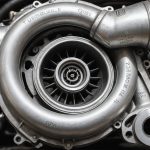Owning a Ducati Multistrada 1200 is a thrilling experience. With its powerful engine and advanced features, it promises an exhilarating ride every time. However, to keep your motorcycle running at peak performance, proper maintenance of the cooling system is paramount. In this comprehensive guide, we will explore the best practices for maintaining the cooling system on your Ducati Multistrada 1200, ensuring it remains in prime condition.
Understanding the Components of Your Ducati Multistrada 1200’s Cooling System
Before diving into the maintenance routines, it’s essential to familiarize yourself with the key components of the Ducati Multistrada 1200’s cooling system. The cooling system is designed to keep the engine operating at an optimal temperature, preventing overheating and ensuring long-term reliability.
Also read : How do I install crash bars on a BMW R1250GS for added protection?
The Engine and Valves
Your Ducati’s engine, equipped with robust valves, is a marvel of engineering. These valves control the intake of the fuel and air mixture, as well as the exhaust of burnt gases. When the engine runs, it generates substantial heat, which must be managed effectively to avoid damage to the internal components.
The Water Pump and Coolant Mixture
Central to the cooling system is the water pump, responsible for circulating the coolant mixture throughout the engine. The coolant, typically a mix of ethylene glycol and water, absorbs the engine’s heat and dissipates it through the radiator.
In the same genre : What is the proper technique for adjusting the rear shock preload on a Yamaha MT-09?
The Thermostat and Temperature Sensor
The thermostat regulates the coolant flow based on the engine’s operating temperature. Alongside it, the temperature sensor monitors the engine’s heat level, relaying the data to the control unit to adjust the cooling mechanism as needed.
The Radiator and Cooling Fans
The radiator and cooling fans work in tandem to expel the absorbed heat from the coolant mixture. The radiator disperses the heat into the atmosphere, while the fans enhance the airflow, especially when the motorcycle is stationary or moving slowly.
Understanding these components is the first step in ensuring your Ducati Multistrada 1200’s cooling system remains effective.
Regular Inspection and Cleaning of Cooling System Components
Regular inspections and cleaning are crucial for maintaining the cooling system’s efficiency. Over time, dust, debris, and grime can accumulate, hampering the components’ performance.
Inspecting the Radiator
The radiator is exposed to the elements and is prone to collecting dirt and debris. Regularly inspect the radiator fins for any signs of blockage or damage. Use a soft brush and water to clean the fins gently, ensuring you do not bend or damage them.
Checking the Water Pump and Coolant Levels
The water pump plays a pivotal role in circulating the coolant. Routinely examine the pump for any signs of leakage or wear. Additionally, always check the coolant levels in the reservoir. Low coolant levels can lead to overheating and severe engine damage.
Examining Hoses and Clamps
Inspect the hoses and clamps for any signs of wear, cracks, or leaks. These components are vital for maintaining the integrity of the cooling system. Replace any damaged hoses or loose clamps promptly to prevent coolant leaks.
Cleaning and Inspecting Fans
Ensure the cooling fans are free from dirt and debris. Check the fan blades for any signs of damage and ensure they spin freely without obstruction. Clean the fans using a soft cloth and water if needed.
By regularly inspecting and cleaning the cooling system components, you can prevent potential issues and ensure your Ducati Multistrada 1200 runs smoothly.
Ensuring Proper Coolant Mixture and Regular Replacement
The coolant mixture is critical in maintaining the engine’s temperature. Using the correct coolant and replacing it at recommended intervals can significantly impact the cooling system’s efficiency.
Choosing the Right Coolant
For your Ducati Multistrada 1200, it is recommended to use a high-quality coolant that contains ethylene glycol. This type of coolant provides excellent heat transfer properties and prevents freezing in cold weather. Always refer to the owner’s manual for the specific coolant recommendation.
Mixing Coolant Correctly
When mixing coolant, adhere to the recommended ratio, usually 50% coolant and 50% distilled water. This mixture ensures optimal performance and protection against corrosion and freezing.
Flushing and Replacing Coolant
Regularly flushing and replacing the coolant is essential for maintaining the cooling system’s effectiveness. Over time, the coolant can become contaminated with debris and lose its thermal properties. As a rule of thumb, replace the coolant every two years or as specified in the owner’s manual.
Bleeding the Cooling System
After replacing the coolant, it’s vital to bleed the cooling system to remove any trapped air. Air pockets can hinder the coolant flow and cause the engine to overheat. Follow the manufacturer’s guidelines for bleeding the system correctly.
Using the right coolant mixture and replacing it regularly ensures your Ducati Multistrada 1200’s cooling system functions optimally, protecting the engine from overheating.
Monitoring and Adjusting Engine Temperature
Keeping an eye on the engine’s temperature and making necessary adjustments can prevent overheating and potential engine damage.
Utilizing the Instrument Panel
The instrument panel on your Ducati displays critical information, including the engine temperature. Regularly monitor the temperature gauge, especially during long rides or in extreme weather conditions. If the temperature exceeds the normal range, pull over and let the engine cool before resuming your journey.
Checking the Temperature Sensor
The temperature sensor plays a crucial role in monitoring the engine’s heat levels. Ensure the sensor is functioning correctly by inspecting it regularly. A faulty sensor can provide inaccurate readings, leading to improper cooling adjustments.
Adjusting the Thermostat
The thermostat regulates the coolant flow based on the engine’s operating temperature. If you notice the engine temperature fluctuating abnormally, the thermostat might be malfunctioning. Replacing a faulty thermostat can restore proper coolant flow and prevent overheating.
Addressing Overheating Issues
If your Ducati Multistrada 1200 consistently runs hot, it could indicate an underlying issue. Check for coolant leaks, blockages, or a malfunctioning water pump. Addressing these issues promptly can prevent severe engine damage and costly repairs.
By actively monitoring and adjusting the engine temperature, you can ensure your Ducati Multistrada 1200 remains in top condition.
Leveraging Advanced Control Systems and Regular Maintenance
Modern Ducati motorcycles, including the Multistrada 1200, are equipped with advanced control systems that enhance performance and reliability.
Engine Control Unit (ECU) and Ride-by-Wire System
The engine control unit (ECU) and ride-by-wire system play a crucial role in managing the motorcycle’s performance. The ECU adjusts the fuel mixture, ignition timing, and other parameters to optimize the engine’s operation. Ensure the ECU firmware is up-to-date for optimal performance.
Throttle Body and Valve Maintenance
The throttle body and throttle valve control the airflow into the engine. Regularly clean the throttle body to prevent carbon buildup, which can affect the engine’s performance and cooling efficiency. Inspect the throttle valve for proper operation and adjust it if necessary.
Regular Engine Oil Changes
Engine oil plays a vital role in cooling and lubricating the engine. Regularly changing the oil with high-quality options like Shell Advance ensures the engine runs smoothly and stays cool. Follow the manufacturer’s guidelines for oil change intervals.
Checking the Side Stand and Fuel Tank
While not directly part of the cooling system, the side stand and fuel tank are essential components. Ensure the side stand operates correctly to prevent accidental tip-overs, which can damage the cooling system. Check the fuel tank for any signs of leaks or damage that could affect the engine’s performance.
Leveraging advanced control systems and adhering to regular maintenance routines ensures your Ducati Multistrada 1200’s cooling system remains efficient, providing you with a reliable and powerful ride.
Maintaining the cooling system on your Ducati Multistrada 1200 is vital for optimal performance and longevity. By understanding the cooling system components, conducting regular inspections and cleanings, ensuring the proper coolant mixture, monitoring engine temperature, and leveraging advanced control systems, you can keep your motorcycle in top condition. With these best practices, you can enjoy the thrill of riding your Ducati Multistrada 1200 with the peace of mind that comes from knowing your cooling system is well-maintained.











